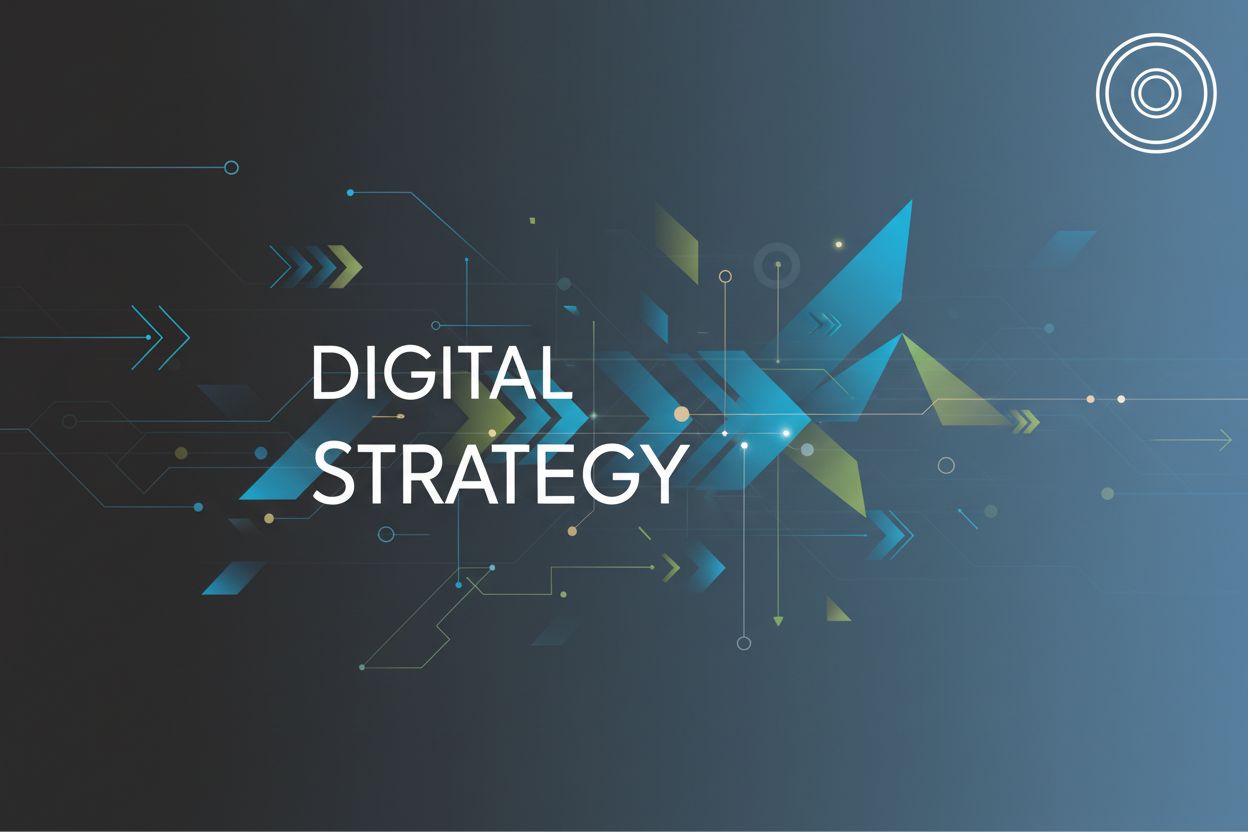Key Components of a Successful Digital Marketing Strategy
TL;DR
Laying the Foundation: Goals, Audience, and Market Research
Alright, let's get this digital marketing strategy thing sorted, shall we? It's not just about throwing spaghetti at the wall to see what sticks, trust me.
So, you're gonna build a house, right? You need a solid foundation... same deal here. We're talking about defining goals, understanding your audience, and doing some good ol' market research.
First up: goals. What exactly are you trying to achieve? More website visits? Bigger sales? Getting your brand name out there? Make 'em SMART: Specific, Measurable, Achievable, Relevant, and Time-bound. For instance, a healthcare provider might aim to boost online appointment bookings by 20% in the next quarter. This is because their market research shows a growing demand for online scheduling among their target demographic, who are primarily busy professionals aged 30-55.
Next, your audience. Who are these people you're trying to reach? What makes them tick? What are their online habits? Seriously, knowing this stuff is half the battle. For example, if your audience is primarily Gen Z, your market research might reveal they prefer short-form video content, which could influence your goal to increase TikTok engagement. Or, if you're a smaller financial firm, your audience might be individuals seeking personalized advice, leading you to focus on community involvement and direct client interaction to stand out from bigger, faceless corporations.
And then, the real fun begins – market research. This is where you put on your detective hat and go digging for data. What are the latest industry trends? What are your competitors up to? What do customers really want? Knowing this is like having a cheat code for your digital marketing campaign.
Market research helps businesses make informed decisions about their digital marketing efforts, but you have to put in the work.
It's not just about collecting data; it's about understanding it. If you can nail these three things, you're already way ahead of the curve.
Now, let's move on to understanding the competitive landscape.
Competitive Edge: Competitor Analysis and Differentiation
Alright, so you've got your goals, audience, and research nailed down. Now what? Time to see what the competition is doing, and more importantly, how to beat them at their own game.
Analyze competitor strategies: What are their strengths? Weaknesses? Opportunities they're missing? Think of it like a digital marketing "SWOT" analysis. For example, a local bakery might find that a competitor's instagram is killing it with user-generated content, but their website is a total mess. This competitive insight can inform your own strategy, perhaps by focusing on a strong website experience while still leveraging user-generated content on social media.
Find your unique angle: What makes you different? Is it your customer service? Your innovative products? Your awesome company culture? Shout it from the rooftops! A smaller financial firm might focus on personalized service and community involvement to stand out from those bigger, faceless corporations.
It's not just about copying what works, it's about finding your own voice. Understanding your competitors' successes and failures, as highlighted by industry experts, is crucial for developing a well-defined digital strategy that carves out your unique niche.
Now, let's dig into choosing the right channels to spread your message.
Choosing the Right Tools: Digital Channels, SEO, and Content
Alright, so you've got the basics down, but how do you actually do digital marketing? It's not magic, though sometimes it feels like it should be, right? It's like having a bunch of tools but not knowing which one to use for what job.
First things first, you gotta figure out where your audience hangs out online. Are they glued to Instagram, scrolling through TikTok, or are they more the LinkedIn type? It's all about picking the right mix of digital channels. This includes platforms like:
- Social Media:
- Instagram: Great for visual brands, influencer marketing, and user-generated content. Think clothing brands, food businesses, or travel companies.
- Facebook: Broad reach, good for community building, local businesses, and targeted ads.
- TikTok: Ideal for short-form video, reaching younger demographics, and creative, trend-driven content.
- LinkedIn: Essential for B2B companies, professional services, and thought leadership content.
- X (formerly Twitter): Good for real-time updates, customer service, and engaging in industry conversations.
- Search Engine Optimization (SEO): This is about making your website and content discoverable on search engines like Google. It's not just about keywords; it involves technical optimization, creating high-quality content, and building backlinks.
- Email Marketing: A powerful tool for nurturing leads, building customer loyalty, and driving repeat business.
- Pay-Per-Click (PPC) Advertising: Paid ads on search engines or social media that drive immediate, targeted traffic.
It's a lot, I know.
- Think of it like this: a hip clothing brand might crush it on Instagram with influencer collabs, while a b2b software company is gonna get more mileage from LinkedIn with thought leadership articles.
- Then there's the healthcare provider, who might see better results with targeted Google Ads and informative blog posts answering common patient questions.
No matter where you're posting, ya gotta have killer content. I mean, seriously, if your content sucks, nobody's gonna stick around – no matter how good your seo is. Think blog posts, articles, videos, infographics – whatever your audience digs.
- A financial firm might create a series of explainer videos about investing, while a local bakery could post mouth-watering photos of their latest creations on Instagram.
- According to Dealers League, "content is so much more than just great blogs, Tweets, and Facebook ads."
And speaking of content, let's not forget Search Engine Optimization (SEO). I mean, what's the point of having awesome content if nobody can find it? Ya gotta optimize your website and content so Google actually notices you.
- That means throwing in some relevant keywords, tweaking your meta tags, and making sure your website isn't slower than molasses. It also involves creating valuable content that answers user queries and building authority through backlinks.
- A local plumber, for example, will want to target keywords like "plumber near me" or "24-hour emergency plumbing" to show up when people are frantically searching for help.
Get all that stuff sorted, and you're well on your way to a successful digital marketing strategy. Next up, we'll dive into how to actually engage with your audience and optimize your efforts.
Engagement and Optimization: Social Media, Email, and PPC
Alright, so you've got folks comin' to your site. Now what? Let's talk about keepin' them around and turnin' them into actual customers, eh?
First, social media engagement. It's not just about posting; it's a dang conversation! Share your stuff, sure, but reply to comments, ask questions, and use ads to reach even more peeps. Think of it like throwing a party, not just putting up flyers!
- Email marketing ain't dead, folks. Nurture those leads with personalized emails, not some generic blast. Segment your audience and automate those emails, so the right message gets to the right person at the right time. For example, you could segment your list based on past purchase history or expressed interests. Automation workflows could then send a welcome series to new subscribers, abandoned cart reminders, or personalized product recommendations based on browsing behavior.
And then there's ppc advertising – pay-per-click! It can drive targeted traffic to your site. Just remember to pick the right keywords and write copy that grabs attention, or else you're just throwing money away. This means doing thorough keyword research to find terms your ideal customers are actually searching for, and crafting ad headlines and descriptions that are compelling, relevant, and include a clear call to action.
Next up: figuring out if all this stuff is actually working.
Measuring and Adapting: Analytics and Optimization
Alright, so you've been hustling, but is it payin' off? Time to see what's workin' and what's just wastin' your precious time.
- Track those KPIs: Website traffic, conversion rates, and engagement – they're your breadcrumbs to follow. Make sure you actually look at 'em, eh? Key performance indicators (KPIs) will vary depending on your goals. For example:
- For increasing brand awareness: Track social media reach, impressions, and website traffic from organic search.
- For driving sales: Monitor conversion rates, average order value, and return on ad spend (ROAS) for PPC campaigns.
- For lead generation: Focus on form submissions, demo requests, and email sign-ups.
- Google Analytics is your pal: It's not just a fancy tool; it's your digital compass. Use it to get insights into user behavior--that stuff's gold. For instance, you might notice in Google Analytics that a specific blog post is driving a lot of traffic but has a high bounce rate. This insight could lead you to optimize that post with more engaging content, clearer calls to action, or internal links to related pages, thereby improving user engagement and potentially conversions.
Time to tweak, adjust, and keep movin! The digital marketing world never stands still, and neither should ya.




